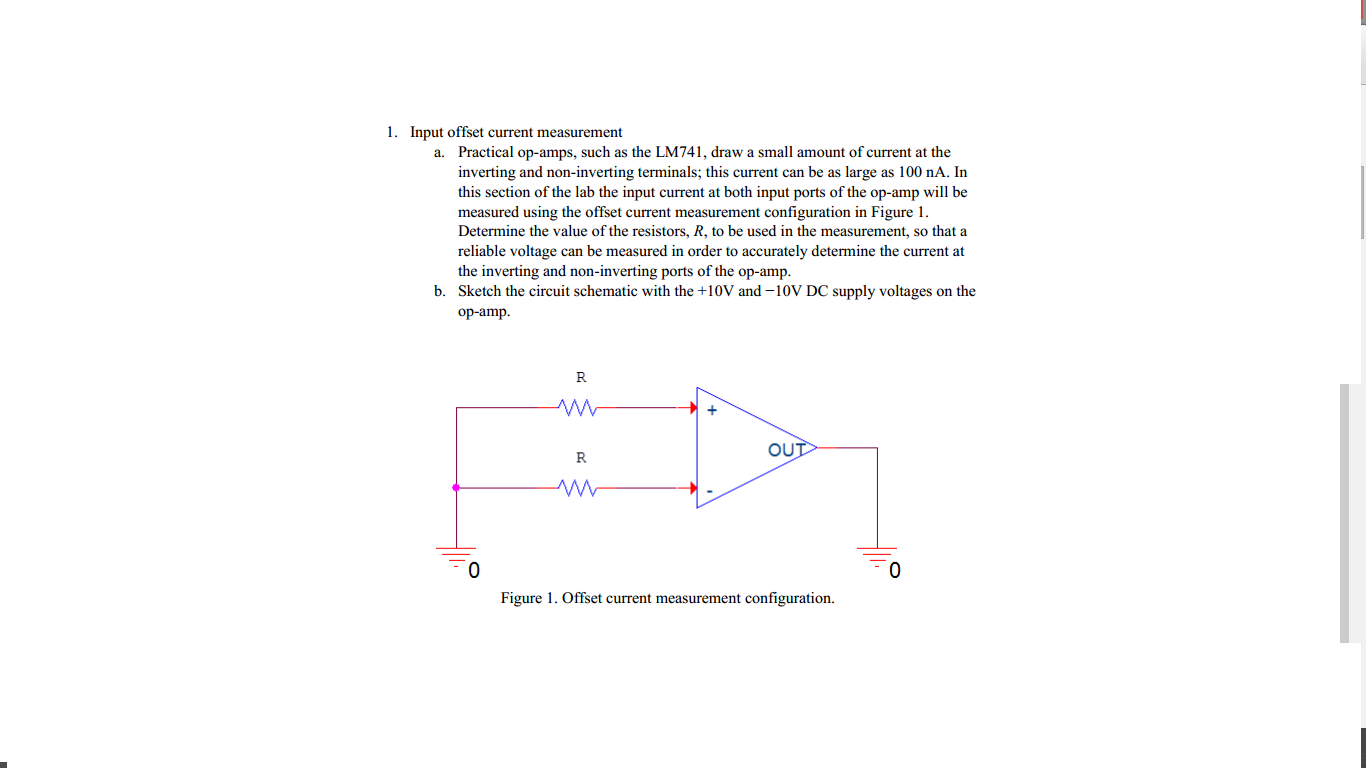

In an ideal op amp, we assume that the Vo versus Vi. This model is consistent with the observation that in a real op amp, the output is zero when there is a difference in the input ( V + ≠ V – ) and that a real op-amp produces a nonzero output when V + = V –. Measurement of Offset Voltage, Bias Currents, and Open-loop Gain. The presence of offset can be encapsulated by assuming that the real Op Amp input/output transfer characteristic is y = A ( V + – V – + e ) where e is the error in the differential input to the ideal Op Amp. The transfer function of an ideal Op Amp is described by the equation y = A ( V + – V – ), where y is the output A is the gain, with A → ∞, V + is the voltage at positive input terminal and V – the voltage at the negative input terminal of the Op Amp. In this article, a generalized method is proposed to compute offset in the output when an Op Amp with an input offset e is used in the circuit. The presence of offset voltage is a well-understood phenomenon and is described in various literature and textbooks. They include aspects including mismatched transistor pairs, collector currents, current-gain betas (), collector or emitter resistors, etc. Some op-amps offer internal offset adjustment via a dedicated pin for these devices, the potentiometer is used in a straight-forward manner as discussed in the op-amp's data sheet. In addition, they can reduce the dynamic range of the output if significant in value. These small offsets are caused by a variety of unavoidable issues within the manufacture of the op amp. An offset adjustment circuit can be added to 'null' out the offset voltage, making high gain stages practical even with significant input offset voltages. Offset voltage of an Op Amp results in an error at the output for DC signals.

In such applications, the presence of offset voltage cannot be ignored unlike in a signal processing chain where DC offsets can be easily filtered out with a single capacitor. One such environment is DC measurement systems. Idealized models of the Op Amp, namely, infinite values of gain, bandwidth, input impedances and output admittance and zero values of input offset voltage and bias currents, are a good first-order approximation for analyzing Op Amp-based circuits.ĭeviation from ideal behavior can be incorporated into analysis depending on the environment in which the Op Amp is operating. Although functionally simple, they exhibit complex behavior as the Op Amp itself is a carefully crafted sub-circuit consisting of more than a dozen transistors. Op Amps are among the most widely used components in systems design of electronic circuits.


 0 kommentar(er)
0 kommentar(er)
